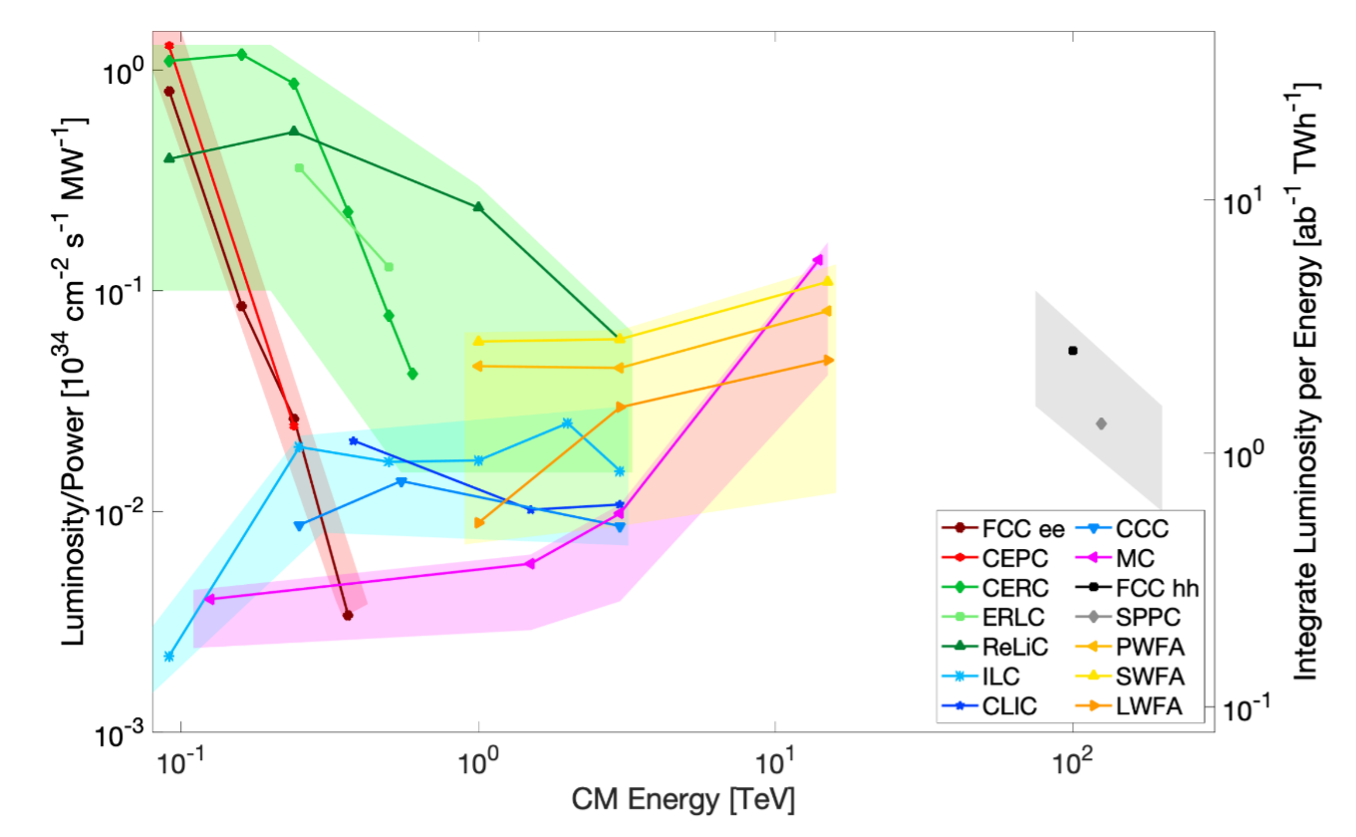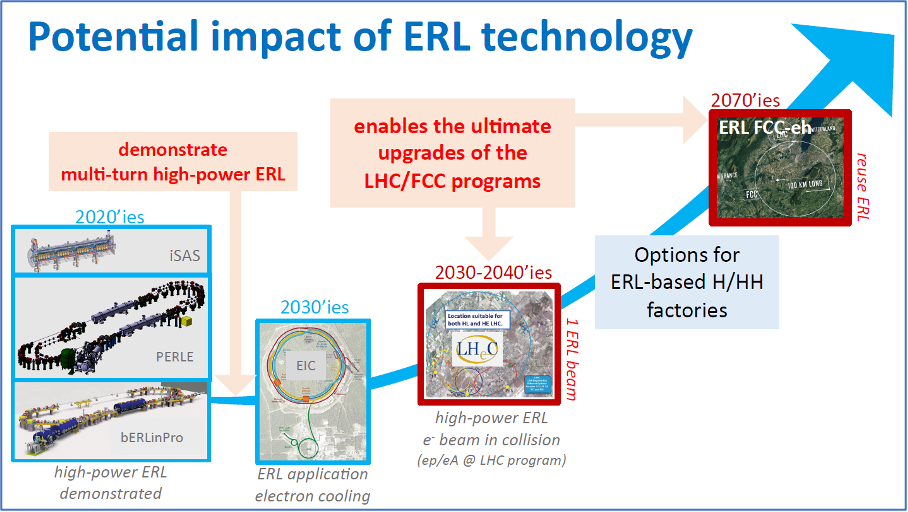
Future applications of ultra-relativistic electron beams have beam quality requirements that well exceed those possible to achieve in a cost-effective manner in storage rings. When accelerated, ultra-relativistic charged particles emit radiation. Bending is of course such an acceleration, and the radiation thereby emitted is termed synchrotron radiation, as it was first observed as visible light shining out from the General Electric Synchrotron in 1947.
Synchrotron radiation also affects the properties of the emitting electron beam through radiation damping and quantum excitation. Damping is the adiabatic cooling of the beam, whereas excitation is the heating of the beam by recoil of the electrons against photons. At high energy, heating dominates, causing a large energy spread, thereby spoiling the statistical properties of the beam and limiting its utility.
Linear accelerators do not suffer from this limitation, so display much higher-quality beams. However, the drawback is their lower beam current, which is limited by the costs associated with the vast amounts of required electric power. By recycling the beam energy, Energy Recovery Linacs (ERLs) offer a way to overcome this barrier. In beam dynamic terms, the ERL concept sits halfway between the pure linac and storage ring solutions. The beam once accelerated and exploited is directed back to the accelerating linac and decelerated by timing the transit at anti-accelerating phase. The beam energy is thus returned to the electromagnetic field within the linac and reused to accelerate subsequent bunches. This process allows it to reach — at high energy — much higher beam power than the radiofrequency power required to sustain it, while also banishing the quality limitation arising from stored beams. In short, the beam is not stored, but its energy is.
The concept of an ERL is not new, having first been proposed by Maury Tigner in 1962. However, the technology is only recently maturing. To store the energy, one needs superconducting radiofrequency linac structures with a high quality factor to minimize dissipation of the energy as heat due to induced currents within the cavity materials (on the timescale of microseconds). Additionally, the structure must not have a high quality factor for unwanted frequencies, which has proven technologically extremely challenging. Industrial maturity in superconducting radiofrequency manufacture is now at the level that ERL-based large facilities can be seriously considered.
Applications that would be enabled by successful deployment of ERLs are those that require beyond state-of-the-art electron beam quality at high average power. Examples include the creation of an interaction point at the Large Hadron Collider at CERN with high-quality 60-GeV electrons at the collider’s bunch rate of 40 MHz; a narrowband gamma-ray source with a high spectral flux for nuclear science and industry; or the generation of 100-kW-scale free-electron laser radiation in the extreme ultraviolet and soft X-ray regime. The latter could be used not only for scientific purposes, but also as a potentially revolutionary light source for photolithography semiconductor chip productio

As an example of the future potential of ERLs, Figure 1 shows estimates of luminosity per MWe facility power for various classes of e+e- collider proposals: ERLs shown in green, storage rings in red, linear colliders in blue, wakefield accelerators in yellow, and muon collider in pink (for reference proton luminosities are indicated in grey).

ASTeC at STFC Daresbury Laboratory is a pioneer in ERL technology, having developed the ALICE energy recovery linac driven infra-red free electron laser in the period 2000-2016. CESA will build upon this legacy in collaboration with our international partners to deploy ERLs in global accelerator facilities.